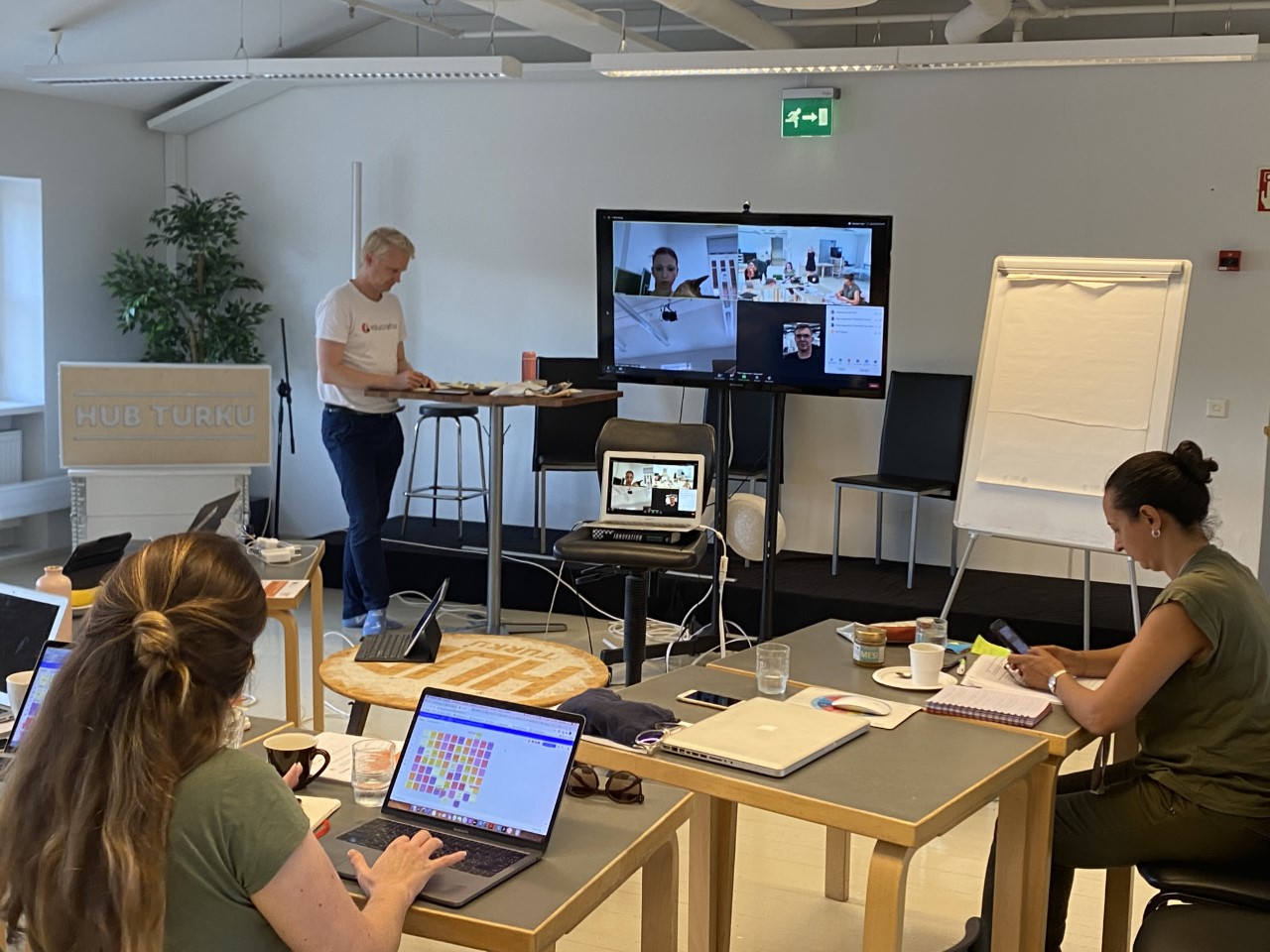7 Recommendations for Hybrid Learning

Hybrid learning, as understood by the author, refers to learning situations where a part of the group is present in the same classroom, while the rest join in virtually.
On numerous occasions throughout the summer, we had to face the need for hybrid learning: in andragogy courses*, where not all students could attend in person, but they were willing to participate online; in a training program in Finland that was part of the E-learning for 2035 project by Erasmus+; as well as in the International Entrepreneurship Education program that is currently underway. Both international training programs had some students that could attend in-person, while others joined in virtually from their homes and workplaces.

During this time, we have determined several ideas for managing hybrid learning:
- Online students get tired quickly. They can get headaches because they have to strain their hearing and spend most of the time as passive listeners. It is important to set up good microphones and web cameras, as well as make sure that the group does not forget about the virtual participants.
- Keep in mind that online participants are not present during breaks, lunchtime, and after school activities, meaning they are usually not up to speed when it comes to our inside jokes and conversations started outside the classroom. This should be discussed with everyone before class starts to avoid creating additional discomfort for those on the other side of the screen.
- It is important to make sure that online students feel that they belong to the group and that their learning is not hindered, they are able to freely express their opinions, ask questions, and are always included in the educational process. To achieve this, you can have the students work in pairs or small groups, organize independent work time, choose online resources where all participants can work together (e.g., Padlet and Miro boards, Google Docs, Kahoot and Mentimeter quizzes, etc.).

- The design of the classroom must be changed. All participants need their own space to create, think, focus, and find solutions by modeling and visualizing the process. If we get used to working this way, then the students (both online and in-person) will not depend on the instructor to guide them through each and every step.
- It is a good idea to keep track of getting closer to and achieving our goals, as well as help participants notice their progress. This way, they will be on the same page, whether they are attending classes in-person or online.
- Holding some classes outdoors will, on the one hand, make it more difficult for the online students to participate, but on the other hand, will let them change the scenery and get some fresh air. This will work particularly well with tasks related to reflection and finding unconventional solutions.
- The introduction of hybrid learning also comes with flexible schedules with shorter training sessions and longer breaks.
What would you add to our list? Let’s put together a cheat sheet to help us create effective hybrid learning programs for our students!
* Vestifex Koolitus has been providing andragogy courses for adult educators in Narva and Tallinn since 2012.
Since 2020, all programs are taught using hybrid learning.





Nicely described 7 important